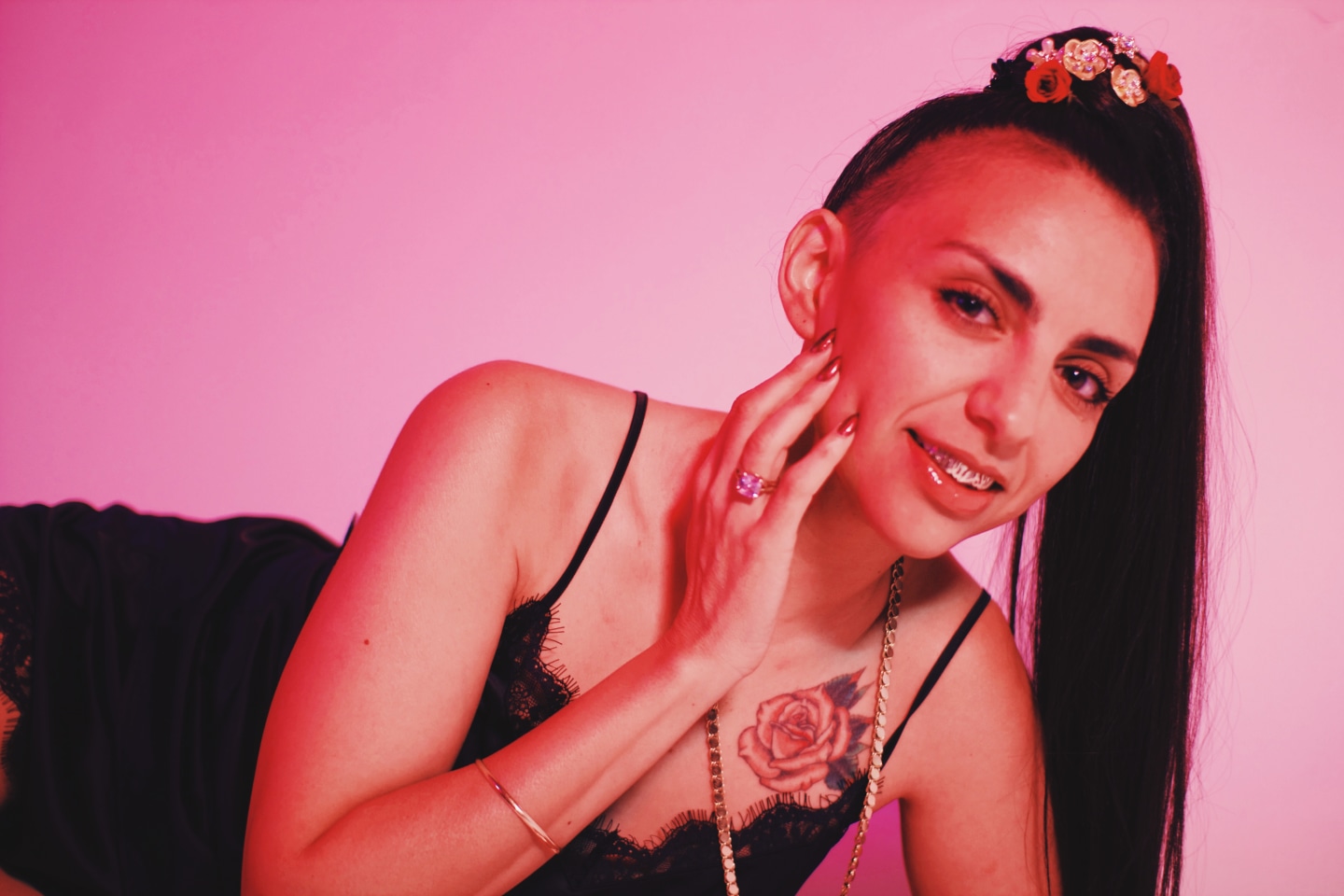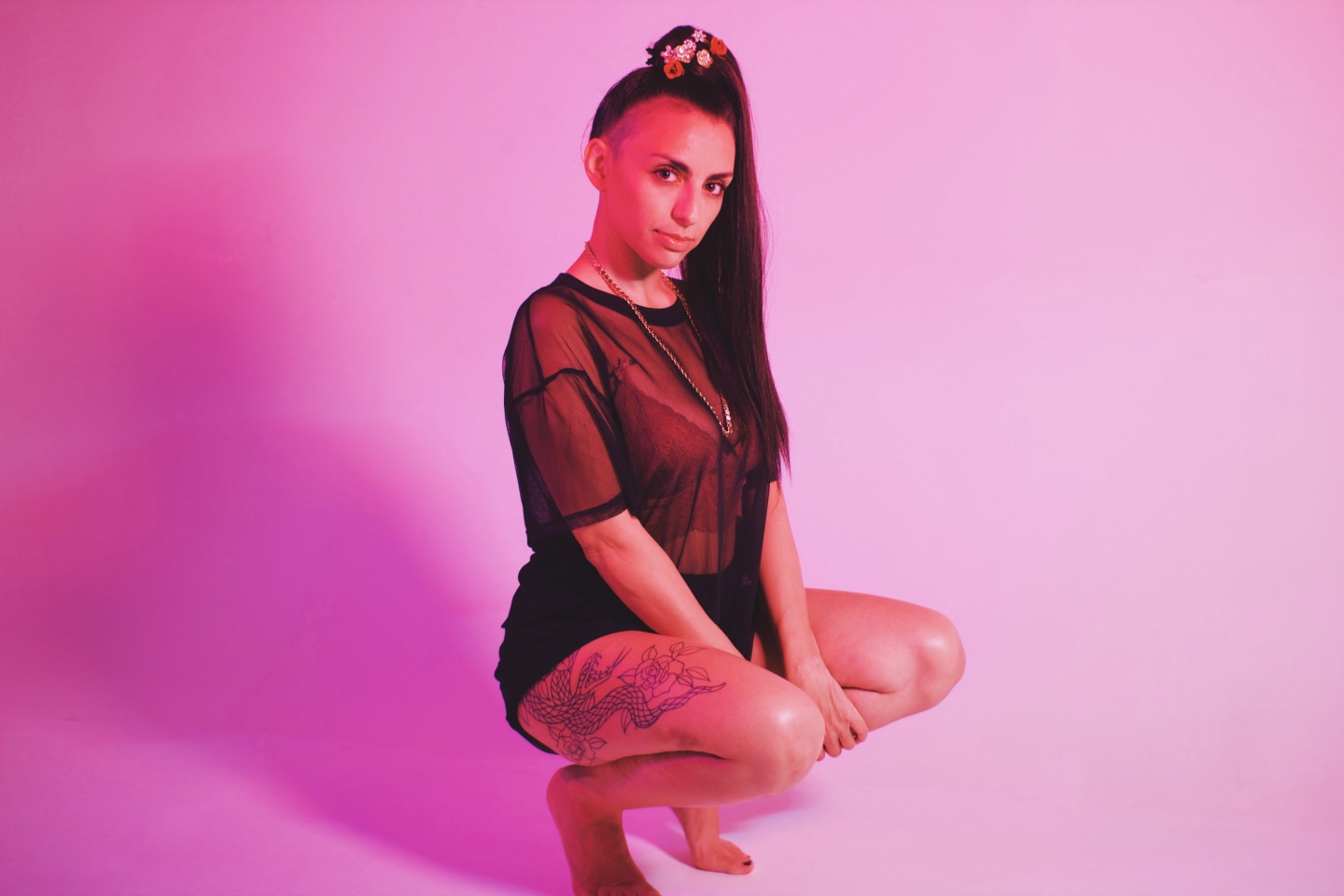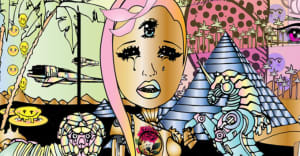Saba Moeel of Cult Days can’t be boxed in
The Oakland-based designer and artist wants you to think outside the box.
 Saba Moeel of Cult Days.
Photo by @coolreve.
Saba Moeel of Cult Days.
Photo by @coolreve.
Saba Moeel hates restrictions, whether they’re literal or imaginary. As the mind behind Cult Days — the moniker that encompasses her work in both music and apparel design — her work is created with the intention to inspire people to move their thoughts from outside of their political and cultural comfort zones, and toward new possibilities. Born in Shiraz, Iran and raised in Oakland, California, there’s a direct line between Moeel's culture and upbringing and the pieces she designs and sells on her website — mythical middle eastern elements, dripping skater imagery, and beautiful, Arabic and Farsi writing are all major players in her work. She’s prolific-as-hell, regularly designing clothing for both adult and children, and creating illustrations, like her Pink Cat character, that take on a life of their own and are not afraid to challenge conventions and make people feel uneasy.
The Cult Days collections, which often consist of apparel, books and everything in between, are modeled after hypebeast capsule drops, and Moeel makes it clear she wants her line to grow through that model. When we spoke over the phone as she drove around Oakland, she explained how she’s perennially logged on, and how she’s down to use her time online to cultivate relationships with others, bring together ideas and concepts for completely unique, and sometimes collaborative, Cult Days drops. It’s a feasible goal — after all, legacy lines like Moncler and Helmut Lang are dismantling traditional creative director roles by tapping new collaborators for a constant supply of fresh blood.
Moeel and Cult Days are both hyper-imaginative. As the latter, she’s in the middle of working on two albums — a rap project and a Hindu spirituals record inspired by her longtime practice of transcendental meditation. She can’t be neatly boxed into one category — whether it’s by government borders or creative limitations.
 Photo by @coolreve.
Photo by @coolreve.
Tell me about Cult Days. How did this project of yours begin?
Cult Days is the umbrella of everything I do, of what I’m trying to grow. It’s music and fashion, and videos. But it’s also everybody I know. Basically, it’s not a joke. It’s an actual cult. I want to grow it, but it’s not the thing where we do an Eyes Wide Shut and have a sex party — I’m not into that. What I want to do is band together. This idea of building an e-nation. In Estonia right now, you can buy into citizenship anywhere in the world if you give like, $40,000 or something like that, and I really like that idea. We can basically have a country without borders because we’re all over the world, and we’re always moving. It doesn’t have to be tied to these borders.
What was your relationship to design and illustration growing up?
I was always doodling, always drawing, painting. I took private watercolor classes. My mom was really good about fostering that stuff with me. When I was in high school, I made my own sweater, and people knew me because of that sweater. [I was] always going to the farthest depths of San Francisco to get the craziest platform shoes nobody had. With illustration, [I was] just super inspired by campy aesthetics, punk, metal and skate imagery. Graffiti and skate stickers that stuck everywhere, those bold and chunky graphics that stay with you and are really youthful — I really admire those and try to emulate that.
You hold a degree in fashion from Parsons. Was there anything else that been instrumental in your work as a designer?
Having my kid. It was like what do I actually want, I want stuff for her, and stuff for her friends. When you become a parent, you’re kind of like the design director for your child’s life. After I had my kid, I realized how dumb everyone was. I finally had an understanding of how the world works, and I was like, “That’s it, I’m the mom now. Everyone sit down.”
You’re also drawn to a lot of mythic imagery in your designs. Why is that?
Culturally, having those stories was huge. Epic Iranian tales of Rostam the epic hero of Iranian mythology, Shahnameh, and the simurgh, the mythical bird popular in Iranian art. I love all these mythical characters. Iranian culture is so poetic. The images [that accompany the stories], too, the miniature [drawings] and the gardens, everyone’s posture is super languid.
I want to go back to your cult for a second. If you were you were initiating someone into it, what would you tell them?
The cult I've been building is based on love, trust, loyalty, and reciprocation. We are all cells of the same body. I'm trying to be the most radical cell in the body, with the goal of radicalizing the rest of the body's DNA so that we, the body, can go beyond expectation and perform something supernatural and beautiful and live in a state of perpetual nirvana. The cult is an e-nation of like-minded people who understand using technology intelligently can bring us closer to freedom and natural living.
When the e-nation is strong and wealthy, I want us to design and build a city together that incorporates all the best and most efficient aspects of the cultures of the world to form a gorgeous Middle Eastern and Asian-inspired eco-friendly, Blade Runner-type world of hydroponic gardens, urban hot springs and communal baths. Spaces for live music 24 hours a day, meditation areas, and breathtaking public edible gardens. Everything must be sustainable and green. Plants and flowers have to be exploding off every surface of this city. Animals should be cherished and live in harmony with city dwellers, we shouldn't use them for food supply but nurture them so they can evolve alongside us and teach us about their areas of expertise.
We should never live bogged down by bureaucracy and the oppression of paper work ever again. It's going to take some work to figure out how to get there, but that's the utopia I would like to see. The word paradise comes from the Farsi word pardis, a garden so beautiful, well designed and cared for that whoever stands inside of it is enlightened by its beauty. That is the goal, to have the environment give people the tools to evolve just by catching a wave of what is actually possible. Whether that is a place, music, or clothing, I'm designing for the future world I want to live in, and that I want my daughter to see.
What do you think is stopping people from doing that?
I think people don’t have the imagination to see it. People have a lot of buzz words, I see it on Twitter a lot. People will randomly attack me and be like, This is a capitalist thing! And it’s like, first of all, [my pieces] are all made in the U.S. And it’s like, what are you going to do, dude? Are you going to live in a tipi on government land?
People love to be mad.
And they love to think of the limitations rather than the possibilities. They haven’t seen it before. I’ve done a lot of psychedelics. I’ve done ayahuasca, I’ve smoked DMT, I’ve done shrooms, acid. I was already really creative and had a million of ideas, but when you see other things, when your mind kind of bends, you just really see a lot more opportunity. You’re like, Wait, this really is a kind of matrix, it might be a computer simulation, so why not?
 Photo by @coolreve.
Photo by @coolreve.
Have you ever considered taking your design skills toward urban planning to make these visions come to life?
Not really. My friend works in city planning and it’s really cool, but hella technical and hella reading and research. That’s not really my bag. My bag is making music and fashion. I have the ideas, and I can draw them, but I don’t want to do any technical research. I just want to become enough of a celebrity so I can get on a bullhorn and say the ideas so that people can get a team together and do it.
Get that clout up.
Exactly! So many people have clout and they don’t do anything with it! Just selling weird tea or wack ass clothes. It’s just like, Dude, what is going on? I would kill for these opportunities. For so long, when I was in New York, no one was trying to hear me out. I watched my ex-husband throw so many opportunities away because he didn’t feel like doing those things, but no one was asking me what I could do!
You recently collaborated with with writer Ayesha Siddiqi on a collection. How did that come to be?
We met because we were going to do a show on VICE. It was going to be me and my ex-husband, and they were going to follow us around and do some kind of reality show. We had been talking with Ayesha, but ultimately he decided he didn’t want to do it, but me and Ayesha stayed in touch. At one point she tweeted out “Oh I want to see this design,” and I was like, “I can do that,” and we started talking and from there.
We work really well together. We just really synced up. Sometimes when you work with other people, they push too hard, or don’t push enough. With her, there’s been no static, we’re working at the same pace, we’re on the same page. We came up with the ideas together, though they’re mostly her ideas, and me putting my spin on them. Ayesha would give me an idea, like a BDSM swan wearing a spike collar, and I executed them. Seeing people respond has been really cool for us.
What drew you both to the anime motifs, like the Anime Apotropaic and hammer and sickle design with a Sailor Moon-inspired wand?
On the site, I made the coloring book which I was calling Arab Anime. I had a huge response to it, it was like anime with middle eastern motifs, like the tiles, palm trees, and hookah. I wanted it to plant the seeds. If you look at Asia like the United States, on the west coast you have the middle east, and on the east coast you have Japan, Korea, China, and everyone else. In the U.S. they’re super good about borrowing from New York or borrowing from California. When you get to Asia, it’s not really like that. I was trying to use anime and middle eastern motifs to bind all of Asia into one country so we could be united. So many of us grew up watching anime, so taking that aesthetic that we connect with and using it for our own purposes. It’s the internet coming to life. It’s something that we weren’t necessarily suppose to see and we saw it and we’re making it our own and changing it.
Tell me more about your Pink Cat character. She’s very cute, but also will drop literal bombs.
I want to make Pink Cat into a Netflix show. That’s my goal. I started writing episodes, and at first she was married, but then I got divorced and was like hell no, she’s definitely single. I started writing again want it to take place in an alternate Bay Area. I’m recording a rap album and one of the songs is called “Pink Cat.”
I just really wanted to see a character that was dynamic. You always have these cats, whether it’s ancient Egypt with cat-worshipping or it’s a number one hit on the internet. Everyone loves it, I love it. That’s not going away. It’s a modern take on eternal cat characters like Garfield and Felix, but she’s definitely going to smoke, drink, and own a gun. I don’t want it to be a clean thing, I want it to be really representative of what people are thinking and feeling. People started asking for merch, and it was really cool they were relating to it, but why wouldn’t they [be]?
What’s in store for Cult Days moving forward?
I want to keep it going. I want to have several different lines with people who have huge followings so I can keep doing this.
The first step in the e-nation is to get those collaborations poppin’.
Exactly. We can all do it together.
Follow Cult Days on Twitter.
